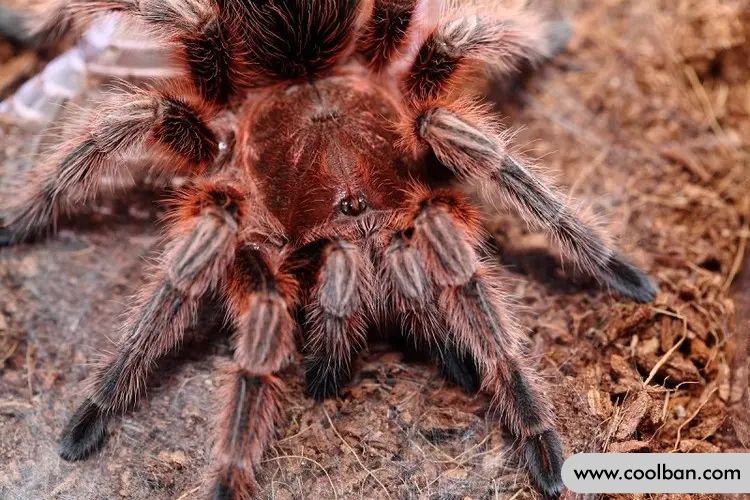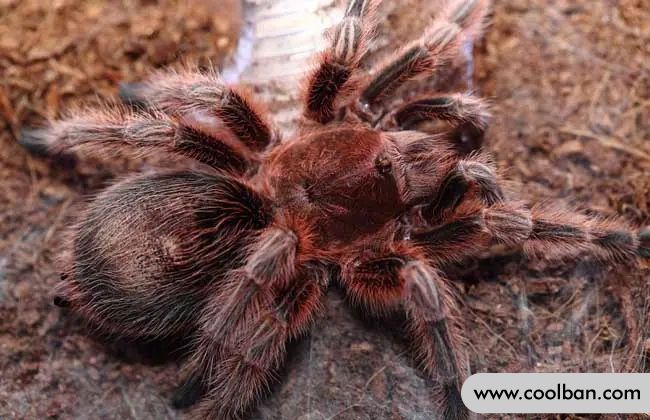Feeding knowledge of Chilean fire rose spider
The Chilean Fire Rose Spider As the name suggests, this spider is native to Chile. Since it is a variant of the Chilean red rose spider, the two are not very different and very similar. Fire roses are ground-dwelling spiders that can build ground webs.
Morphological characteristics of Chilean fire rose
Young Chilean fire rose spiders are so similar to red rose spiders that it can be difficult for professionals to tell them apart. The easiest way to tell them apart is by looking at the color on their backs. Learn more about the basic characteristics of the Chilean fire rose spider below.
The main difference between Chilean fire rose spiders and Chilean red roses is that they appear redder. Adults are about 14-15 cm, the carapace is red instead of pink. However, they are not as common as Chilean red roses. They were once thought to be a red variant of the Chilean red rose, which shares the Latin scientific name "Grammostola" with the Chilean red rose. rosea", but now European and American enthusiasts use "Grammostola porteri" to call Chilean fire rose spiders and recognize them as two separate species.
The Chilean fire rose spider grows no more than 6 in color above its adulthood cm is noticeably more reddish, while Chilean red roses are more off-white. A female Chilean red rose was mated with a male Chilean fire rose spider and some offspring were successfully produced. The high hatchability of such eggs (almost 100%) also shows that even though they are two species, they are very closely related.

Living environment of Chilean fire rose spider
Chilean fire rose spiders are ground-dwelling spiders that are good at making ground webs. Because of its beautiful appearance, many people buy and keep it. Chilean fire rose spiders prefer to inhabit savannah environments or tropical rainforest environments in the wild. If reared, it is recommended to arrange the breeding environment according to their living habits in the wild.
The litter in the incubator of the Chilean fire rose spider can be mixed with coconut bricks and peat, and water cups and shelters are essential. If raising larvae, there is no need to add a water cup or put cotton in the water cup to prevent the larvae from falling into the water and dying. The Chilean fire rose spider is suitable for survival in an environment of 25-27°C, and the humidity can be controlled at 60-70%.

Breeding knowledge of Chilean fire rose spider
In recent years, more and more people keep pets. Whether they are reptiles or flying animals, there are people who keep them. The charming Chilean fire rose spider is a very popular animal in the reptile market. So what do we know about growing Chilean fire rose spiders? What do you need to know?
Crickets, cockroaches, mealworms, and mealworms can be the main daily feed for keeping Chilean fire rose spiders. If feeding larvae with crickets, or for the first feeding after a week of molting, the jaws of the crickets should be removed or the head should be shredded with tweezers to reduce their mobility and ensure spider safety. If the larvae are small, mealworms can also be cut into segments and fed one by one. Chilean fire rose spiders don't grow very fast, so it takes about three years from larvae to adult, but it can be more fulfilling and fun to grow with the spider molting.

What should I do if I get bitten by a Chilean fire rose spider?
Almost all tarantulas are venomous, but the Chilean fire rose spider is weak. If bitten, it will only be a little red and swollen, with a slight burning and pain. For adults, take some anti-inflammatory drugs after being bitten, then wash the wound with soapy water, it is best to squeeze the venom out, disinfect with alcohol, and then apply aloe vera juice on the surface to relieve itching.
Chilean fire rose spiders have severe hair loss, which is a form of self-preservation. The bristles usually grow around the spider's buttocks in limited numbers, and when they are sloughed off, the buttocks are bare, and new ones don't grow until after molting. The ends of the bristles are hooked and poisonous, so they can cause discomfort to the human body. When observing a reared spider, pay attention to breathing and movements, and try not to rest your head on the spider's buttocks. For people, as long as the bristles don't fly into the eyes or into the body through breathing, it's not a big problem. It's just a little painful and itchy, and it'll be fine after a while. Sensitive people will experience redness, and more sensitive people will have more severe skin symptoms and have to go to the hospital.
